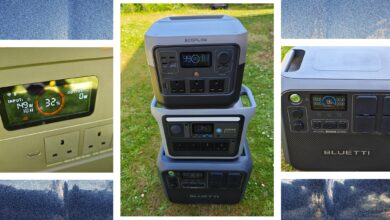Doing DNS and DHCP for your LAN the old way—the way that works


Aurich Lawson | Getty Images
Here’s a short summary of the next 7,000-ish words for folks who hate the thing recipe sites do where the authors babble about their personal lives for pages and pages before getting to the cooking: This article is about how to install bind and dhcpd and tie them together into a functional dynamic DNS setup for your LAN so that DHCP clients self-register with DNS, and you always have working forward and reverse DNS lookups. This article is intended to be part one of a two-part series, and in part two, we’ll combine our bind DNS instance with an ACME-enabled LAN certificate authority and set up LetsEncrypt-style auto-renewing certificates for LAN services.
If that sounds like a fun couple of weekend projects, you’re in the right place! If you want to fast-forward to where we start installing stuff, skip down a couple of subheds to the tutorial-y bits. Now, excuse me while I babble about my personal life.
My name is Lee, and I have a problem
(Hi, Lee.)
I am a tinkering homelab sysadmin forever chasing the enterprise dragon. My understanding of what “normal” means, in terms of the things I should be able to do in any minimally functioning networking environment, was formed in the days just before and just after 9/11, when I was a fledgling admin fresh out of college, working at an enormous company that made planes starting with the number “7.” I tutored at the knees of a whole bunch of different mentor sysadmins, who ranged on the graybeard scale from “fairly normal, just writes his own custom GURPS campaigns” to “lives in a Unabomber cabin in the woods and will only communicate via GPG.” If there was one consistent refrain throughout my formative years marinating in that enterprise IT soup, it was that forward and reverse DNS should always work. Why? Because just like a clean bathroom is generally a sign of a nice restaurant, having good, functional DNS (forward and reverse) is a sign that your IT team knows what it’s doing.
Just look at what the masses have to contend with outside of the datacenter, where madness reigns. Look at the state of the average user’s LAN—is there even a search domain configured? Do reverse queries on dynamic hosts work? Do forward queries on dynamic hosts even work? How can anyone live like this?!
I decided long ago that I didn’t have to, so I’ve maintained a linked bind and dhcpd setup on my LAN for more than ten years. Also, I have control issues, and I like my home LAN to function like the well-run enterprise LANs I used to spend my days administering. It’s kind of like how car people think: If you’re not driving a stick shift, you’re not really driving. I have the same kind of dumb hang-up, but for network services.
Honestly, though, running your LAN with bind and dhcpd isn’t even that much work—those two applications underpin a huge part of the modern Internet. The packaged versions that come with most modern Linux distros are ready to go out of the box. They certainly beat the pants off of the minimal DNS/DHCP services offered by most SOHO NAT routers. Once you have bind and dhcpd configured, they’re bulletproof. The only time I interact with my setup is if I need to add a new static DHCP mapping for a host I want to always grab the same IP address.
So, hey, if the idea of having perfect forward and reverse DNS lookups on your LAN sounds exciting—and, come on, who doesn’t want that?!—then pull up your terminal and strap in because we’re going make it happen.
(Note that I’m relying a bit on Past Lee and this old blog entry for some of the explanations in this piece, so if any of the three people who read my blog notice any similarities in some of the text, it’s because Past Lee wrote it first and I am absolutely stealing from him.)
But wait, there’s more!
This piece is intended to be part one of two. If the idea of having one’s own bind and dhcpd servers sounds a little silly (and it’s not—it’s awesome), it’s actually a prerequisite for an additional future project with serious practical implications: our own fully functioning local ACME-enabled certificate authority capable of answering DNS-01 challenges so we can issue our own certificates to LAN services and not have to deal with TLS warnings like plebes.
(“But Lee,” you say, “why not just use actual-for-real LetsEncrypt with a real domain on my LAN?” Because that’s considerably more complicated to implement if one does it the right way, and it means potentially dealing with split-horizon DNS and hairpinning if you also need to use that domain for any Internet-accessible stuff. Split-horizon DNS is handy and useful if you have requirements that demand it, but if you’re a home user, you probably don’t. We’ll keep this as simple as possible and use LAN-specific DNS zones rather than real public domain names.)
We’ll tackle all the certificate stuff in part two—because we have a ways to go before we can get there.
Source link




